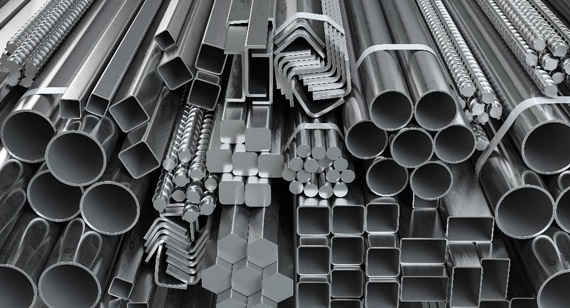15 years one-stop China custom CNC machining parts factory

Hey there I’m VMT Sam!
With 25 years of CNC machining experience we are committed to helping clients overcome 10000 complex part-processing challenges all to contribute to a better life through intelligent manufacturing. Contact us now
 102 |
Published by VMT at May 01 2024
102 |
Published by VMT at May 01 2024
With the continuous advancement of modern manufacturing, stainless steel has gained widespread application in various fields as an important metal material. Particularly in the field of CNC machining, the 300 series stainless steel is highly favored for its unique corrosion resistance, mechanical properties, and machining performance. As experts in CNC machining parts manufacturing, this article delves into the techniques of CNC machining 300 series stainless steel, aiming to provide valuable reference for CNC machining factories and meet the demand of readers for knowledge about stainless steel CNC machining parts.
I. Analysis of Material Characteristics of Stainless Steel CNC Machining Parts
The 300 series stainless steel is commonly used in CNC machining due to its excellent corrosion resistance and machining performance. Among them, 304 stainless steel is widely applied in fields such as home appliances, tableware, kitchenware, water heaters, boilers, and food machinery due to its good corrosion resistance, heat resistance, low-temperature strength, and mechanical properties. Meanwhile, 304L, as a low-carbon variant of 304 steel, exhibits similar corrosion resistance to 304 steel, but demonstrates superior resistance to intergranular corrosion after welding or stress relief. Additionally, the 300 series stainless steel also features good ductility and weldability, facilitating various processing methods such as stamping, bending, and welding.

II. Selection and Preparation of CNC Machining Factories
When CNC machining 300 series stainless steel, selecting the appropriate CNC machining factory is crucial. A high-quality CNC machining factory should be equipped with advanced CNC machine tools, precise measuring equipment, and experienced technical personnel to ensure machining accuracy and efficiency. Moreover, the factory should possess a sound quality management system and after-sales service system to guarantee machining quality and customer satisfaction.
Before machining, CNC machining factories should have an in-depth understanding of the material characteristics of 300 series stainless steel and develop reasonable machining processes and parameters according to the specific requirements of the parts. Additionally, appropriate cutting tools and fixtures should be prepared to ensure smooth machining processes.

III. Key Techniques for CNC Machining 300 Series Stainless Steel
Selecting Suitable Cutting Tools
Due to the high hardness and toughness of 300 series stainless steel, selecting suitable cutting tools is crucial for improving machining efficiency and quality. Hard alloy and coated tools are preferred for machining stainless steel due to their high hardness and wear resistance. Moreover, appropriate tool shapes and sizes should be chosen according to the machining method and part geometry.
Setting Cutting Parameters Reasonably
The setting of cutting parameters directly affects machining results and tool life. When machining 300 series stainless steel, reasonable cutting speeds, feed rates, and cutting depths should be selected based on the hardness and toughness of the material. Generally, using smaller feed rates and cutting speeds can reduce tool wear and heat generation on the workpiece surface, thus improving machining quality.
Cooling and Lubrication
Maintaining sufficient cooling and lubrication during machining is essential for reducing cutting friction, lowering heat generation, and prolonging tool life. Cutting fluid or cutting oil can be used to cool and lubricate the cutting zone, ensuring smooth machining processes.
Selection of Machining Methods
For machining 300 series stainless steel, continuous feed machining is highly recommended for maintaining surface finish and dimensional accuracy. Additionally, manual or automatic feed methods can be selected based on the specific shape and size of the parts.
Monitoring and Adjusting Machining Processes
During machining, close monitoring of machining quality and tool condition is necessary, and cutting parameters and machining methods should be adjusted timely to optimize machining results. Furthermore, regular maintenance and upkeep of CNC machine tools are essential to ensure normal operation and machining accuracy.
IV. Strategies for Improving Efficiency of CNC Machining 300 Series Stainless Steel
Introducing Advanced Technology
With the continuous development of technology, new advancements are constantly emerging in the field of CNC machining. Introducing advanced CNC machining technology, intelligent equipment, and automated production lines can significantly improve machining efficiency and accuracy while reducing production costs.
Enhancing Personnel Training
Skilled technical personnel are key to improving the efficiency of CNC machining. Strengthening training and skill enhancement for technical personnel, enabling them to proficiently master the machining techniques of 300 series stainless steel and operation methods of CNC machining equipment, helps improve machining quality and efficiency.
Optimizing Machining Processes
Continuously optimizing machining processes and parameters can reduce energy consumption and material waste during machining, thus improving material utilization and machining efficiency. Additionally, modular design and standardized production can enhance production efficiency and product quality.
V. Conclusion
CNC machining of 300 series stainless steel is a complex and delicate task that requires mastery of certain techniques and methods. By choosing the right CNC machining factory, preparing suitable cutting tools and fixtures, setting cutting parameters reasonably, enhancing cooling and lubrication, selecting appropriate machining methods, and monitoring and adjusting machining processes, machining efficiency and quality can be effectively improved. Moreover, strategies such as introducing advanced technology, enhancing personnel training, and optimizing machining processes can further enhance the efficiency and level of CNC machining 300 series stainless steel.
As experts in the field of CNC machining parts manufacturing, we should continuously learn and explore new machining technologies and methods to meet the growing demand for stainless steel CNC machining parts in the market. Meanwhile, we should also pay attention to industry trends and technological developments to provide strong support for the sustainable development of CNC machining factories.
Ready To Start Your Next Project?
Get Instant Quote

Request a Free Quote
Send us a message if you have any questions or request a quote. We will get back to you ASAP!